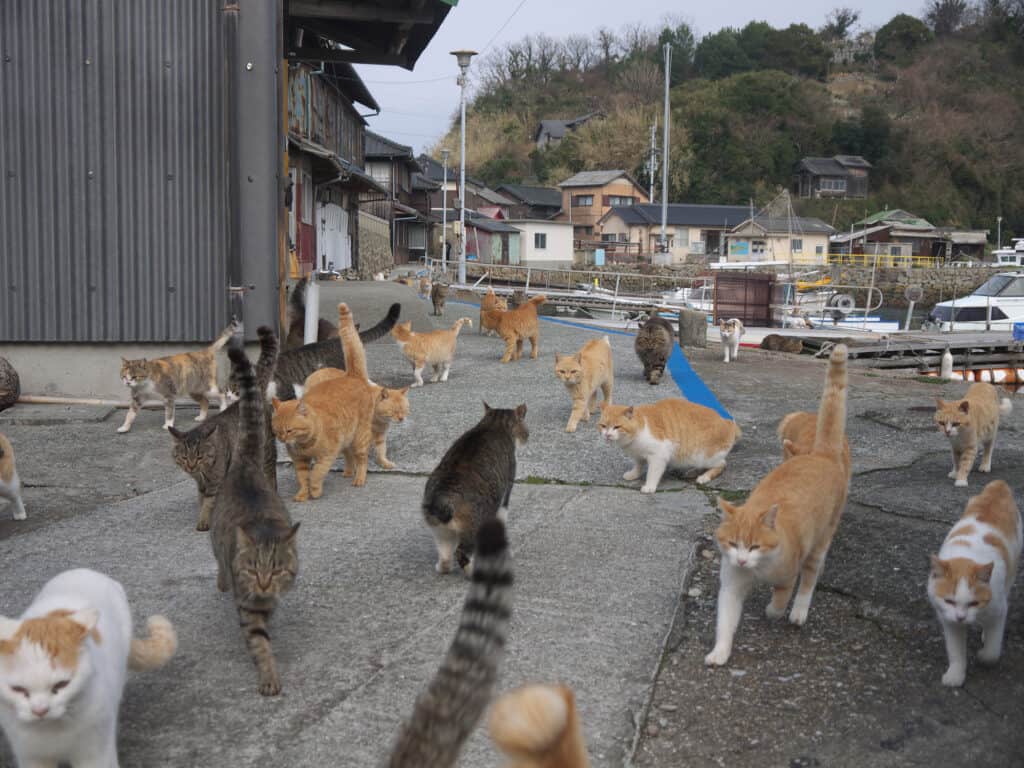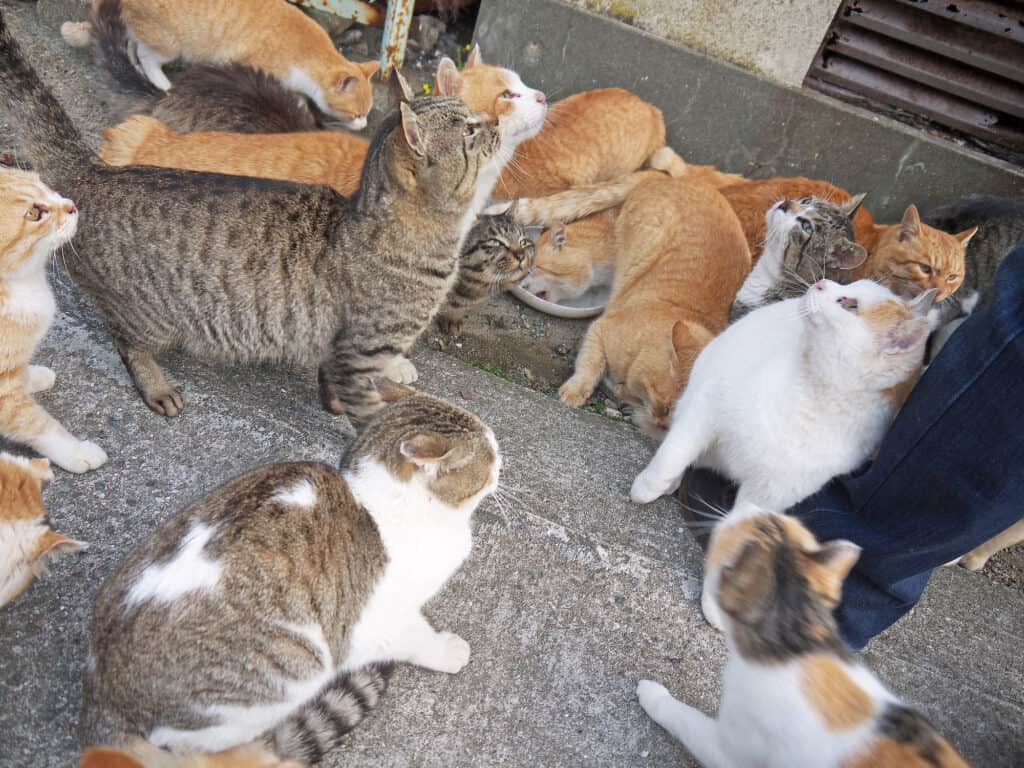Cats bring their owners joy as they snuggle, play, and slink around the house as if they own it. We often think of them as sassy and independent. But how do they behave when they are in groups? And what is a group of cats called? The answer may surprise you, and there are several variations. Find out how to address a group of cats, including how cat groups function.
Cat Group Names and Their Origins

A group of cats is called a clowder. A group of domestic kittens is called a litter or a kindle.
©iStock.com/MirasWonderland
Interestingly, a group of cats is most commonly called a clowder. But you can also refer to a group of cats as a cluster, clutter, glaring, or pounce. Group cat names can be very specific. If you have a group of domestic kittens, you can call them a litter or a kindle. But if you happen upon a litter of wild kittens, refer to them as a destruction of kittens! Yes, really.
But wait, there’s more!
Here are a few more cat group names: dowt, comfort, and nuisance. As in, “I just bought a huge comfort of cats.” And if that’s not perfection, I don’t know what is.
The origin of the word clowder and why we use it to describe cats is not well known. The first record of the variation clodder was used in the late 1700s, and it means “to clot.” Clotter is another variation, which means to “huddle together.” But most definitions have to do with things coming together. And because of our long history with pet felines, there’s no wonder why we have so many names for them.
How Do Cats Function in a Clowder?

Feral cat colonies are comprised of females and their kittens. They may have a loose hierarchy.
©iStock.com/ES3N
If you’ve ever had a cat, you know they are solitary and territorial animals. The lone wolf that likes to sit on your couch, that you paid for, and glare at you.
But you may also know that they will live communally if forced to.
When we think of a clowder of cats, we typically think of wild cats. And they typically operate in two ways: solitary with territories or female-led small groups. Those that choose to live on their own, establish hunting territories and mark their boundaries with urine, feces, and other scent glands. They tend to avoid direct conflict with other felines and may even have neutral areas, where they briefly interact with others. But unknown cats that encroach on their territory may be met with aggression.
Feral cats that live in colonies operate differently. These glarings are compromised of females and their kittens. You may be wondering if female cats have an alpha, but female colonies do not operate like dog packs. They may have a loose hierarchy, but their relationships with each other are more complex. They do not form a pack mentality and still hunt and operate in a solitary way.
Their groups can function primarily because the mothers bond with their babies. And, surprisingly, the kittens in the group will nurse from more than one lactating queen. This also helps the clowder to form social bonds. Because of their familiarity with one another, there is very little aggression.
Are Male and Female Cat Groups Different?

Male cats live in their own territories near the periphery of female colonies.
©iStock.com/ES3N
Wild male cats, or toms, are not usually a part of groups. They tend to live in their own territories near the periphery of female colonies. Male territories are bigger than females. And dominant males have even larger territories. Familiar males can approach female colonies without aggression and perform greeting and grooming behavior.
The reason you may not see many clowders of cats is due to their development of solitary hunting. They are more likely to be aggressive with other cats, more so than dogs because they lack complex visual signaling beneficial to animals that operate well in social groups. Cats do better around those they are used to. And this translates even to domestic felines. You may notice that your cat acts aggressively towards cats they don’t know. But their attitudes change once they become familiar.
The photo featured at the top of this post is © Juan_Algar/Shutterstock.com
Thank you for reading! Have some feedback for us? Contact the AZ Animals editorial team.






